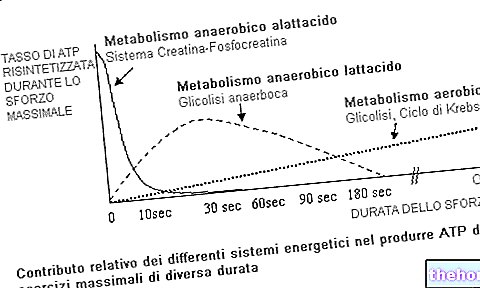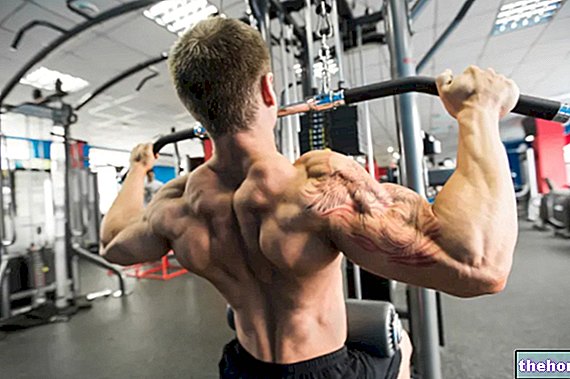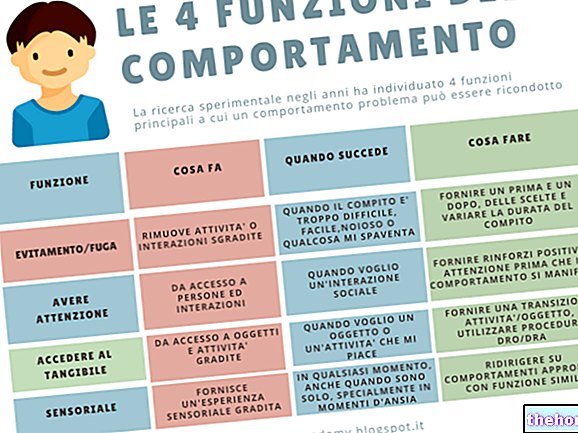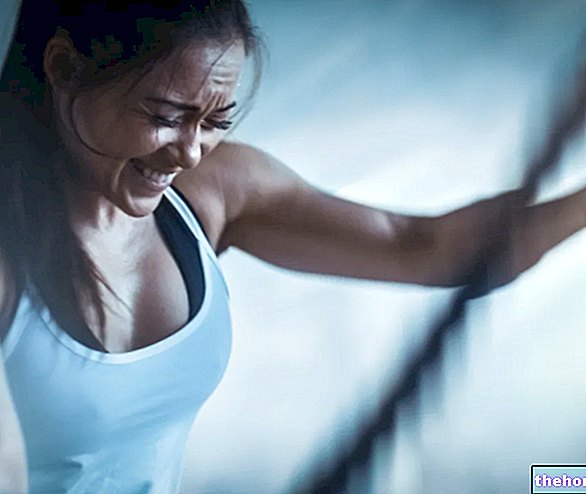The anatomical sites as sites of fatigue and the related physiological mechanisms involved have been identified for some time; on an experimental basis, the fatigue was differentiated into CENTRAL and PERIPHERAL.
- CENTRAL when it is attributable to mechanisms that originate in the central nervous system (CNS), or in all those cortical and subcortical nervous structures whose tasks range from the idea of movement to the conduction of the nervous impulse up to the spinal motor neuron.
- PERIPHERAL if the phenomena that determine it occur in the spinal motor neuron, in the motor plate or in the skeletal fibrocell.

In long-lasting sports activities, important metabolic alterations occur such as:
- Reduction in blood sugar
- Plasma accumulation of ammonium (NH3)
- Increased ratio of aromatic and branched amino acids
which also negatively affect the functionality of nerve cells.
The studies dealt with so far seem to show that the site most affected by fatigue is the muscle (PERIPHERAL component), excluding the nerve junction. Intense and long-lasting sporting activity negatively influences the activity of the sarcolemma by altering the intra and extracellular ionic distribution with an increase in intracellular sodium (Na +) and extracellular potassium (K +). This phenomenon decreases the negativity of the resting potential of the fiber and reduces the amplitude of the action potential as well as the speed of propagation.Furthermore, the accumulation of hydrogen ions (H +) in the extracellular environment also seems to contribute to the reduction of the conduction speed of the muscle fiber.
In fatigued muscle, the alteration of the functionality of the transverse tubules-sarcoplasmic reticulum complex plays a decisive role; it compromises the contractile mechanism which is more affected by the availability of adenosine tri phosphate (ATP) and calcium (Ca2 +). It has been shown that the amplitude of the Ca2 + transient decreases with the development of fatigue and is attributable to an inhibition of the Ca2 + release and reuptake channels at the sarcoplasmic reticulum level, accompanied by the reduced affinity of troponin for Ca itself; these phenomena can be traced back to the increase in H + and attributed to the increase in lactic acid. Finally, the reduction of the Ca2 + release and reuptake process of the sarcoplasmic reticulum increases the duration of the Ca2 + transient by reducing the rate of contraction.
Another factor on which the onset of fatigue depends is undoubtedly the imbalance between the speed of ATP splitting and the speed of its synthesis. What matters more than the concentration of this molecule (which rarely drops to below 70%), is the concentration of inorganic phosphorus (Pi) which is released by the hydrolysis of ATP; its increase induces the formation of actin-myosin bridges and hinders the contractile mechanism.
Also noteworthy is the availability of muscle glycogen which, in prolonged exercises in oxygen consumption between 65% and 85% of VO2MAX (recruitment of fast white, oxidative-glycolytic and fatigue-resistant fibers, therefore type IIa) , becomes a strongly limiting element; on the contrary, for efforts of lower intensity, the primary substrates are glucose and blood fatty acids; for those of higher intensity, the accumulated lactic acid requires the interruption of the effort BEFORE the exhaustion of the reserves of glycogen.
Finally, remember that a lack of carnitine, a fundamental molecule in the production of energy, can be placed at the origin of muscle fatigue.
Muscle fatigue is undoubtedly a multifactorial etiology phenomenon that involves various cellular sites and biochemical mechanisms and that depends on the type of exercise performed, its duration and intensity, and therefore on the type of fibers involved in the athletic gesture.Reference text: Physiology of man - edi ermes; chapter 2. Muscle physiology; pages 90-91




























